Pie: it's as easy as 1, 2, 3.14159....
As a justification to stuff our pie holes this month, we’ve found a convenient pair of homophones — the phonetic rendering of the Greek letter π (used to represent the ratio of a circle’s circumference to its diameter) and the classic dessert of filled pâte brisée. To bake in this pun, Pi Day is observed by indulging in sweet treats on March 14th — a nod to the irrational number π signifies: 3.14159…
But what does Euclidean geometry have to do with America’s favorite dessert? Any pie-maker knows. Not only are areas, volumes, and angles crucial to baking, many STE(A)M (science, technology, engineering, art, and mathematics) disciplines come into play, as elaborated below:
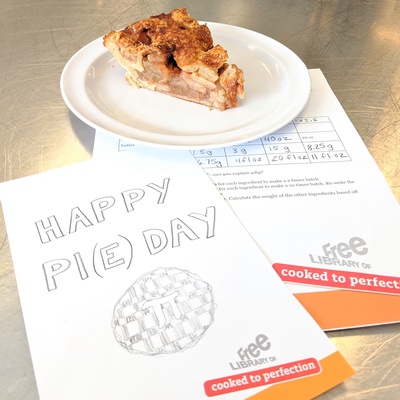
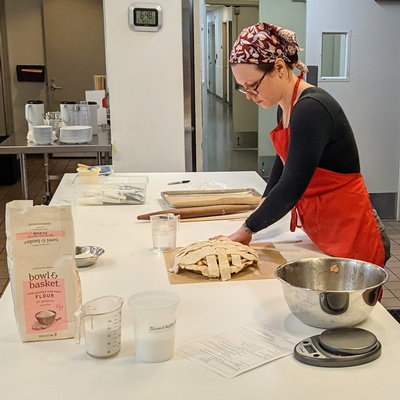
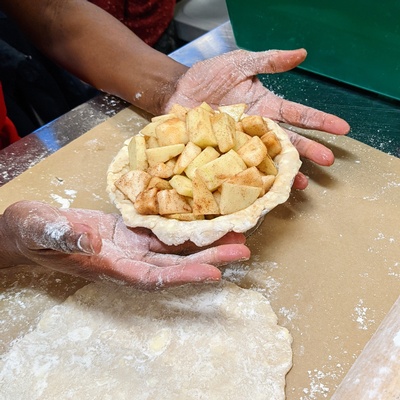
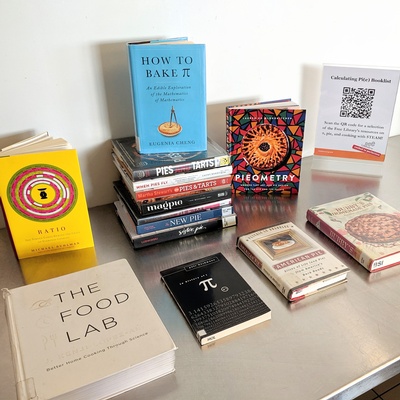
Images from the program “Calculating Pi(e)” on March 14, 2022 at the Culinary Literacy Center
Science
Baking is often labeled a science because precision in measurement and technique is essential for a successful bake. On a more granular level, it exists at the intersection of countless scientific disciplines: chemistry helps us understand amino acids, carbohydrates, proteins, and the biochemical and physiological processes of nutrition; physics explains how butter goes through solid, liquid, and gaseous states to puff our pastry, and calculates the energy values of food in calories; biology is essential to food safety (microbiology, specifically) and the understanding of agriculture, plants, and animals as food sources, and the seasonality of crops; and geography adjusts baking temperatures for altitude and explains how climate hydrates our flour. And of course, what is the research and development phase of recipe-writing besides a scientific experiment adjusting different variables against certain controls?!
More on science in food:
Technology
As technology evolves, baking adapts. Ever since refrigeration and residential energy infrastructure figured in domestic kitchens, cooking has embraced technology. Labor for modern cooks is cut down by electric appliances like microwaves and blenders, as well as manual kitchen tools (which should be considered technology too). The most essential analog measuring tools — thermometers, timers, scales — have gone digital with high-tech iterations that allow you to measure temperature with infrared detection, time in milliseconds, and weight in milligrams. Not to mention, the smartphone has all but obviated timers and calculators in home kitchens (though after using yours, be sure to use the technology most crucial to food safety: soap!)
Technology is also applied in farming, industrial food production, and the genetic modification of food that helps to feed the world. More abstractly, the Internet has changed the way we learn to cook, share information, and perform on-the-fly substitutions and calculations, decreasing our dependence on more verified sources and internal recall.
More on technology in food:
Engineering
In its simplest definition, engineering is the application of math and science in problem-solving. Sounds like recipe development again, doesn’t it?! Engineering skills like calculation, measurement, and logical reasoning are absolutely crucial to developing recipes and ensuring the final, constructed baked good has integrity. Beyond our kitchens, an entire subfield of food engineering combines electrical, mechanical, civil, chemical, industrial, and agricultural engineering to optimize manufacturing and operations for producers and to innovate new processes for food preservation and fabrication.
More on engineering in food (though not food engineering):
Arts
The arts are a new entry to the STEM family, but certainly not to baking. Since we moved from approaching food as a method of alimentation to one of pleasure, creativity has played a huge part in the trajectory of the culinary arts. In the modern dining experience, we have come to expect innovation in flavors, compositional plating, and even artistic expression — we absorb food’s aesthetics first, and then the intention of its creator, and baked goods are especially subject to these principles of beauty and design. And whether working in the kitchen or dining at the table, in front of the television, or in an open kitchen, we find great entertainment from our experiences watching, eating, and making food.
More on the arts in food:
Mathematics
You have sat in math class thinking (or saying), “When am I going to use this?” One answer is: when you’re baking, writing recipes, and conducting your own culinary experiments. Geometry is essential in rotating your work, determining the diameter of your pan, and getting the right area and volumes to match your desired yield. Arithmetic calculates multiple batches of recipes, fractions, ratios, and (if we’re fastidious) the caloric and nutritional content of our dishes. Conversion from metric to standard, Celsius to Fahrenheit, volume to weight, and smaller to larger measurements all require basic algebra. It might be intimidating, but is it more so than building a pie?
More on math in food:
This is just a short compendium to show how the common refrain “baking is a science” sells this cooking method too short — it’s where STEAM meets gastronomy, it marries multiple disciplines, and is only perfected through repeated scientific experiments. With this expanded list of relevant books, and this activity around the very classic, very mathematic 3-2-1 Pâte Brisée, you too can explore the STEAMier side of America's favorite dessert this Pi Day.
Find a complete Calculating Pi(e) book list in our catalog!
The Free Library of Philadelphia’s Culinary Literacy Center specializes in programs that develop multiple literacies, giving equal weight to sciences (both hard and soft), the humanities, and the culinary arts. For more information about how food can be used as a tool to teach beyond the table, email kitchen@freelibrary.org or attend one of its upcoming events.
Have a question for Free Library staff? Please submit it to our Ask a Librarian page and receive a response within two business days.

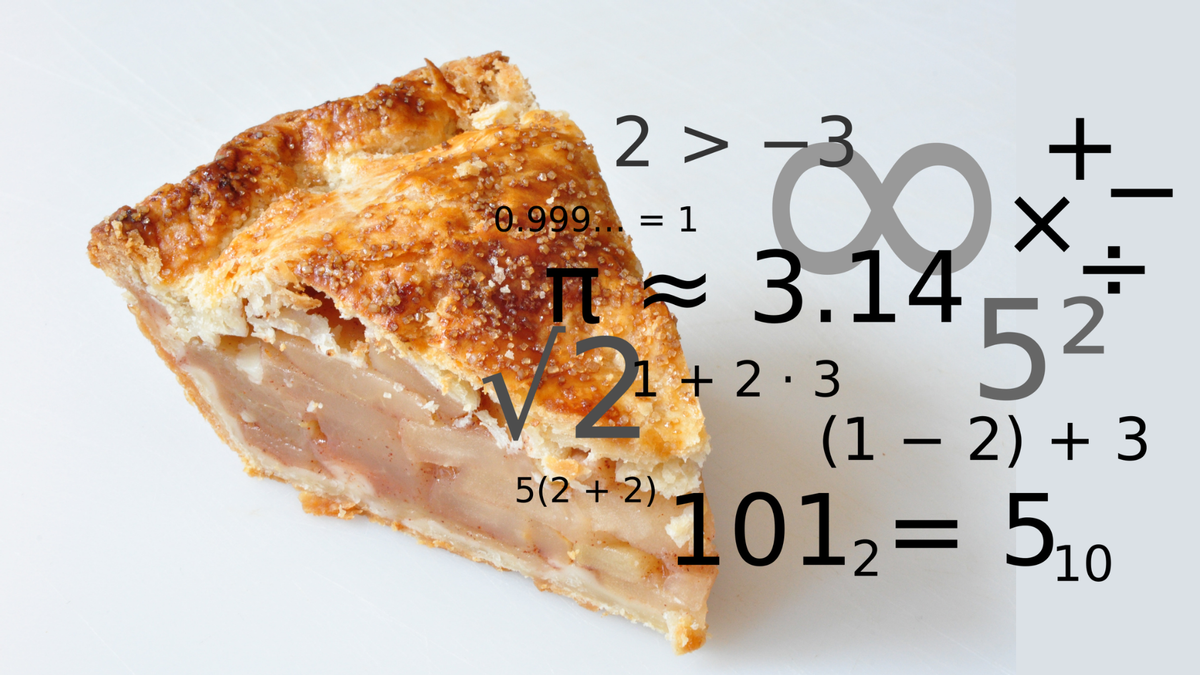

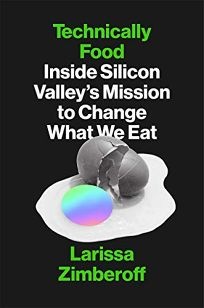


![How to Bake [Pi]: An Edible Exploration of the Mathematics of Mathematics](https://media.freelibrary.org/assets/catalog/items/1988349/images/medium.jpg)